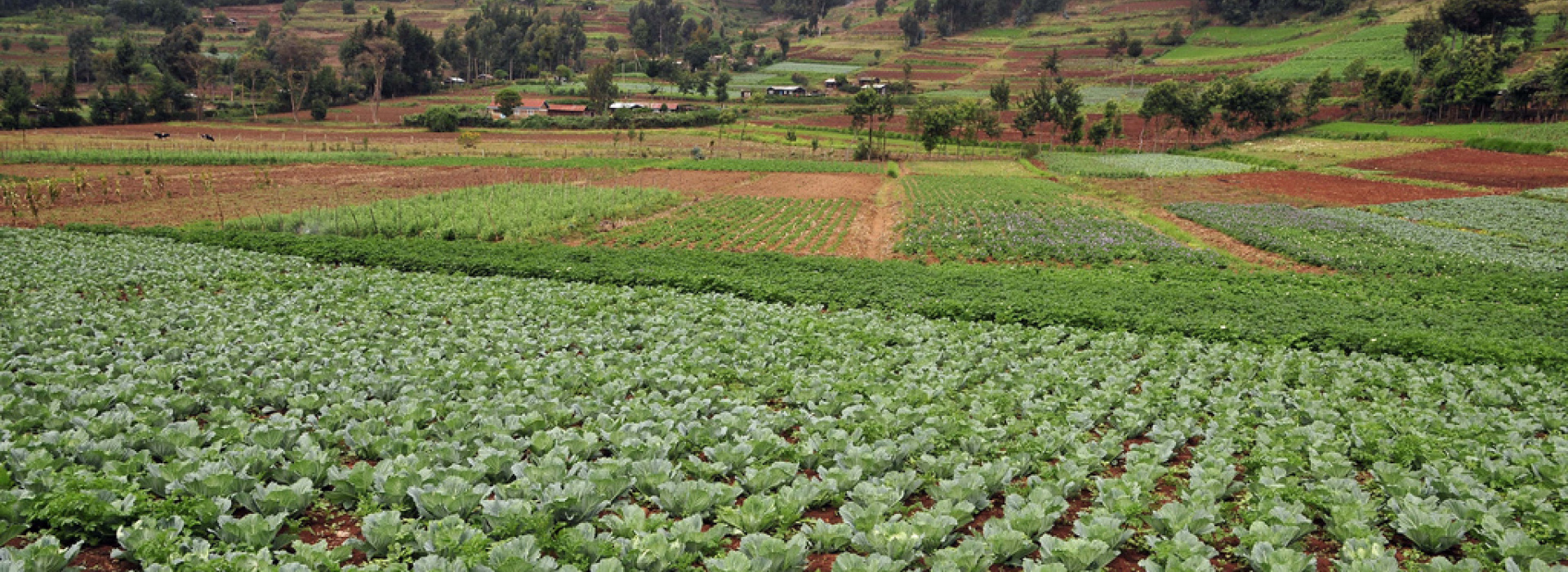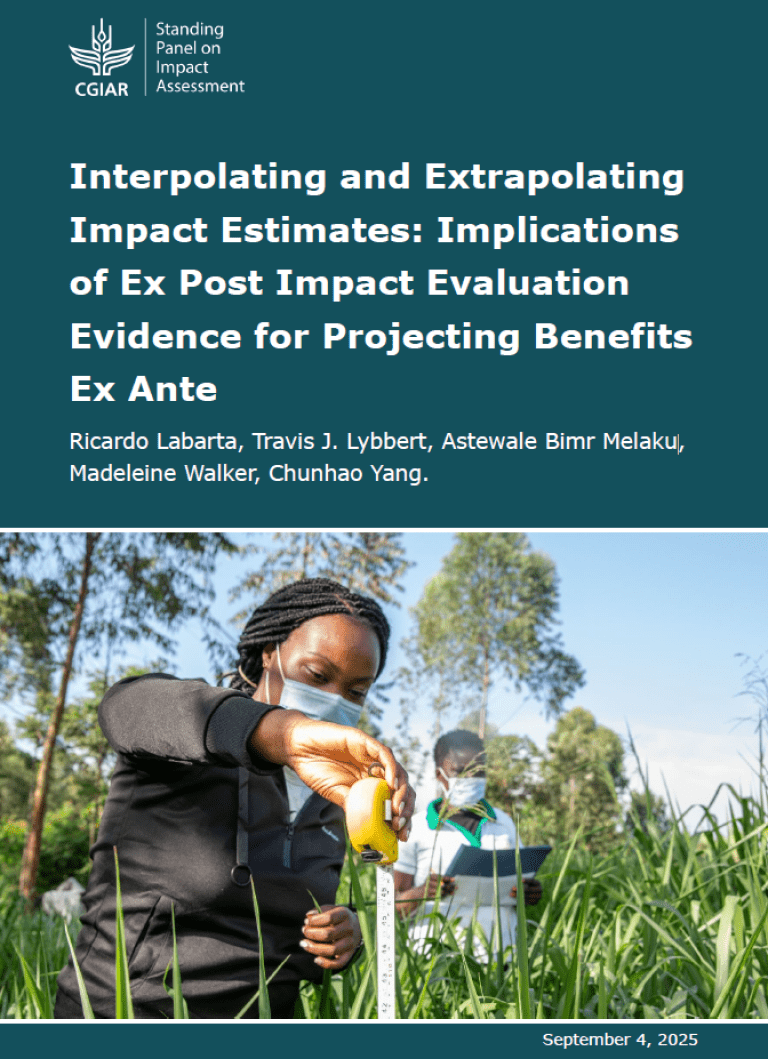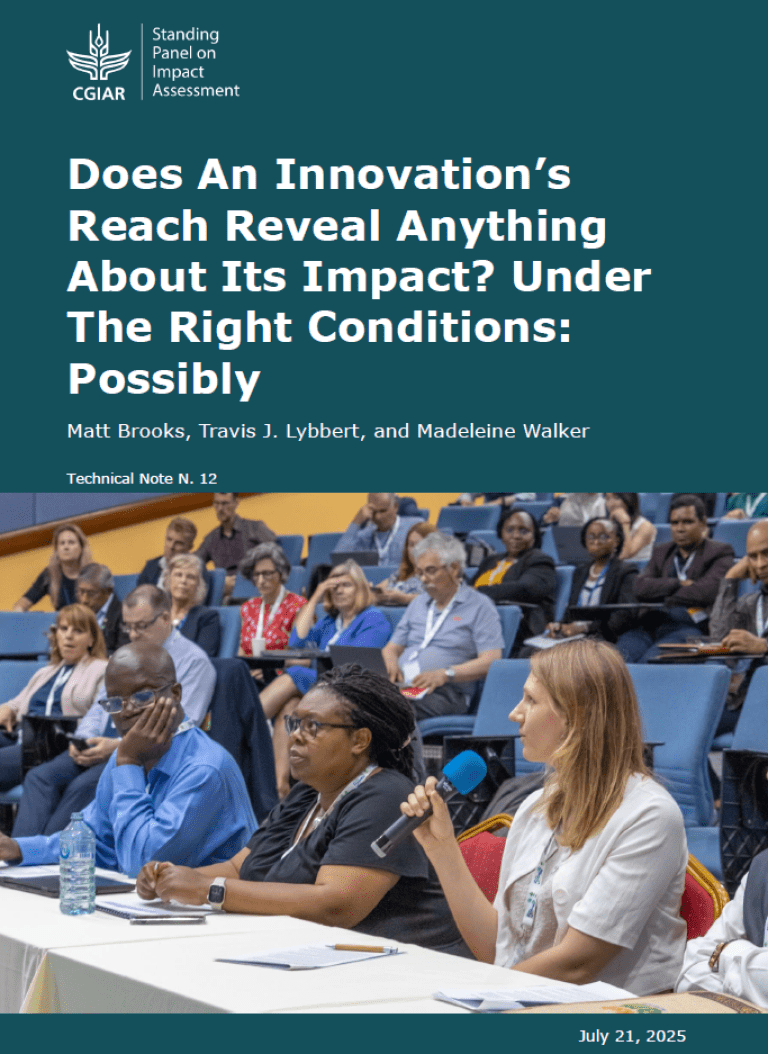DNA fingerprinting is the process through which genetic material is extracted from a sample taken from an individual plant, or population of plants, in a field and then compared to a known set of genetic profiles – referred to as a “library” of reference samples. The individual sample is then matched to its closest reference sample providing a definitive answer to the question of whether the sample is or is not that variety or cultivar. DNA fingerprinting has long been used by breeders and geneticists, but it is starting to be used by economists and social scientists as a tool for data collection. There are two reasons for this: The first is that the per-unit cost of analysis is coming down (See Figure 1); the second is that it is becoming increasingly difficult to differentiate varieties based on phenotypic (observable) characteristics. As reported earlier, studies are showing that both expert opinion and farmer surveys very often incorrectly identify whether a variety is improved and nearly always misidentify the specific variety. Without accurate information on varieties, farmers, extension agents, seed companies and researchers can’t make informed decisions that drive agricultural development.
While scaling up the use of DNA fingerprinting sounds good in theory, it is challenging in practice because the way a sample is collected (leaf or grain and from which part of the plot) can influence the results; the materials in farmers’ fields are often very heterogeneous and do not match well with reference samples, especially when simpler, lower cost identification protocols (assays) are used; and collecting and preserving samples so that DNA can be extracted intact requires skilled, careful field staff with a tight “cold chain” for the data linking the plot and the laboratory. In addition, decisions need to be made about what sampling frame makes most sense to answer the important questions—farms (to get accurate diffusion maps), households (to understand adoption dynamics and impacts on welfare outcomes) or seed systems (to figure out where along the chain from breeders to farmers things are going wrong.)
Guidance Is Needed To Maximize Accuracy and Usefulness and Minimize Cost
In order to direct future efforts to scale up DNA fingerprinting—by which we mean use it not just in research but in large-scale surveys on farmers’ fields—SPIA convened a committee comprising: the CGIAR Excellence in Breeding platform (Marianne Bänziger), World Bank Living Standards Measurement team (Talip Kilic), University of Minnesota (Phil Pardey), and the Bill and Melinda Gates Foundation (Richard Caldwell). Between us we shaped an agenda for a two-day workshop, hosted by the Bill and Melinda Gates Foundation in Seattle (BMGF), which took place on 18th and 19th January 2018.
The central challenge we set out ourselves was to review the technical and logistical challenges to appropriate design for sampling plant material from a representative sample of farmers. After spending the first day hearing presentations from different perspectives on this issue (geneticists, economists, statisticians, private sector supply chain experts), on day two we broke into groups to try and tackle the challenges we had identified. The goal was to work towards consensus on the “dos and don’ts” for how to scale up DNA fingerprinting, bringing all these different disciplinary perspectives to bear on the problem.
We are now working on capturing the output from groups focused questions such as:
- How we should sample from the plot for each category of crop (open-pollinated, self-pollinated, clonal)?
- How best to integrate this sampling within an existing household survey to better understand varietal adoption patterns and impacts?
- Which kinds of DNA fingerprinting assays work best for each specific setting and research question?
- How should we sample from markets to help our understanding of the seed system?
A number of these topics have been the subject of some controversy or uncertainty over the past year or two, so the prospect of resolving these questions and communicating “good practice” in a short guidance document is something that a number of us are excited about and are motivated to bring to fruition.
I want to thank our hosts, the Bill and Melinda Gates Foundation, for the workshop and all of the participants in what was a thoroughly enjoyable and productive event.
Related Links
BLOG: Data on Adoption of Improved Varieties: Why Do We Need These Estimates?
EVENT: DNA Fingerprinting Workshop (18-19 January, BMGF, Seattle)
PAGE: Strengthening Impact Assessment in the CGIAR (SIAC), 2013-2016



